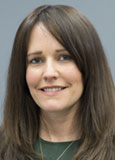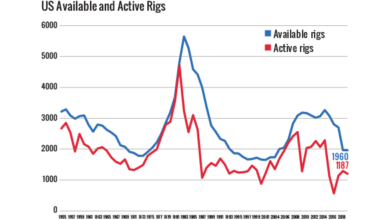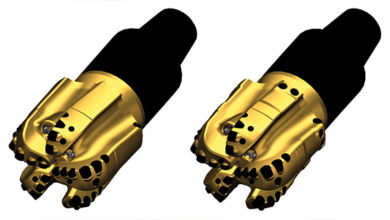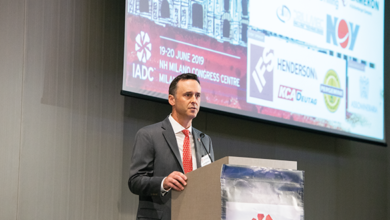Han Tiebout, GustoMSC: To design and engineer new products, don’t assume you know what users need – talk to them to find out
By Sarah Junek, Associate Editor
Han Tiebout always saw himself becoming an engineer, even from an early age. From his childhood home in Rotterdam in The Netherlands, he could already see the tall buildings of the Delft University of Technology – the school he would attend one day and where he would earn bachelor’s and master’s degrees in mechanical engineering.
But, as a teenager, he also gained an early appreciation for the hands-on side of machine work, from having spent high school summers with grease-stained hands at his dad’s car garage. Throughout his career, it would be this mix of passion for both engineering and hands-on field work that would drive him through his career to where is now, as Director of Business Development with GustoMSC, a National Oilwell Varco company.
Growing up near a major shipping port in Rotterdam, Mr Tiebout always had an interest in cranes and made it the focus of his mechanical engineering master’s work. But he found his interest shifting when he met someone who worked for IHC Gusto Engineering and began an apprenticeship with the company in nearby Schiedam.
“I saw what offshore was doing, and it became more interesting than working on machines for the port area,” he recalled. Some of the first projects he worked on at Gusto included a bearing mechanism for an offshore crane and a detachable jacking system for a jackup rig.
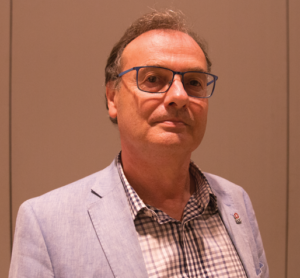
In 1980, after earning his master’s degree, Mr Tiebout went to work full-time for Gusto as a design engineer. In this position, he gained experience with a wide range of offshore projects, from installations to construction to production and drilling. One of his favorite early projects was designing offshore cranes for the Soviet Union Ministry of Gas – some of which are still in operation today. “I saw two of them in the Caspian Sea last year,” he said.
Within a couple of years, Gusto was also sending Mr Tiebout out on sales calls, supporting the sales representative by providing a design engineer’s perspective to potential clients. This exposed him to the end product and the people who use it, something he found that he truly enjoyed.
“It was fascinating to become associated directly with clients and listen to what they need, rather than sitting in an office and trying to figure out what they need.”
In 1985, Mr Tiebout found himself wanting to learn more about the commercial aspects of the business and joined Cameron, which gave him the chance to build, test and take new performance-improving projects directly to the rig.
“I finally got to be closer to what was actually happening in the field,” he said, adding that when Cameron gave him his first pair of coveralls, it was like getting a license to get his hands dirty. It meant that he was not just designing equipment but testing it with his own hands.
He worked on various product lines during this time, including blowout preventors, Christmas trees, risers, subsea wellheads, valves, chokes and connectors, focusing on how theoretical design can be combined with operational experience for better products.
In retrospect, his time at Cameron was a turning point in his career, Mr Tiebout said, because it gave him such deep access to the people who operate the equipment in the field, onshore and offshore, and the ability to talk to them directly and ask what they think and need.
“Quite often people design something because they think this is what is needed,” he said. “But you need to talk to the people.”
After 12 years with Cameron in various marketing and engineering roles, Mr Tiebout joined Varco BJ in 1997, where he led the design of various equipment for the North Sea, such as drill pipe and casing elevators, power slips, rotary support tables and iron roughnecks.
And in 2001, he was recruited back to Gusto when the company recognized that it was lacking in talent with operational experience. In hiring Mr Tiebout, they knew they were getting an engineer who could tell designers how equipment was actually used on drilling rigs. “Hardly any people in the company at the time had ever been on a rig,” he recalled.
Most recently, Mr Tiebout was part of the Gusto team that conceived the idea of the Chela, a remote-controlled arm extension crane that can reach below the cantilever of a jackup rig and elevate equipment toward the main deck, providing access to an area typically blocked by the drilling cantilever. It is designed to enable multitasking on offshore rigs.
“With this crane, they can drill one well while working on the next well doing wireline operations or coil tubing,” he explained.
Looking to the future of offshore, Mr Tiebout said he wants to turn more of his focus to renewable energy. Since 2015, he has been working as Gusto’s liaison to the Oil and Gas Reinvented Community, an industry group that connects members to innovation happening inside and outside the industry. This work has encouraged him to think more deeply about applying oil and gas knowledge to new energy sources, such as hydrogen and geothermal.
“I think there is a need to explore geothermal more. It’s right under our feet.” DC

